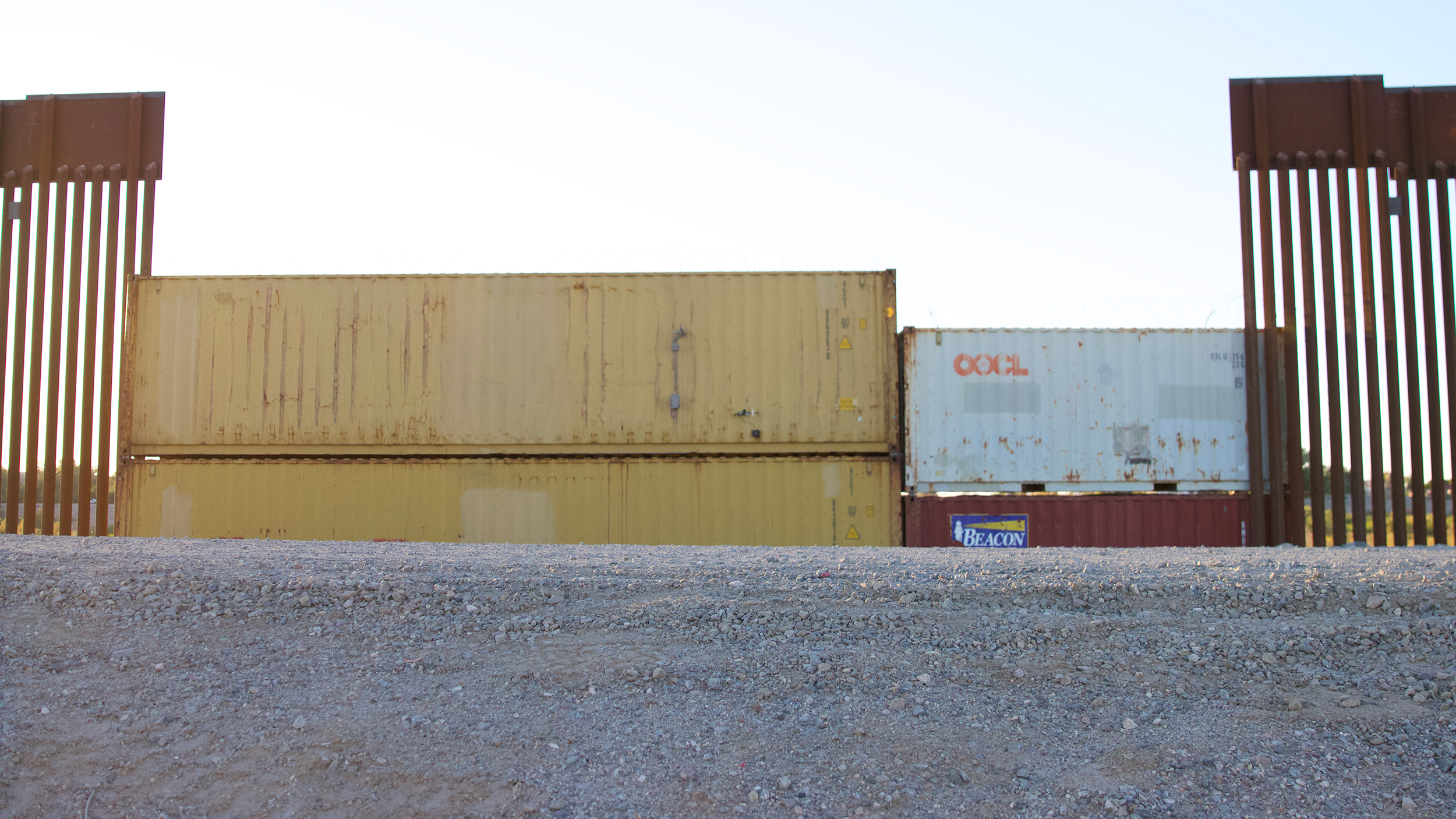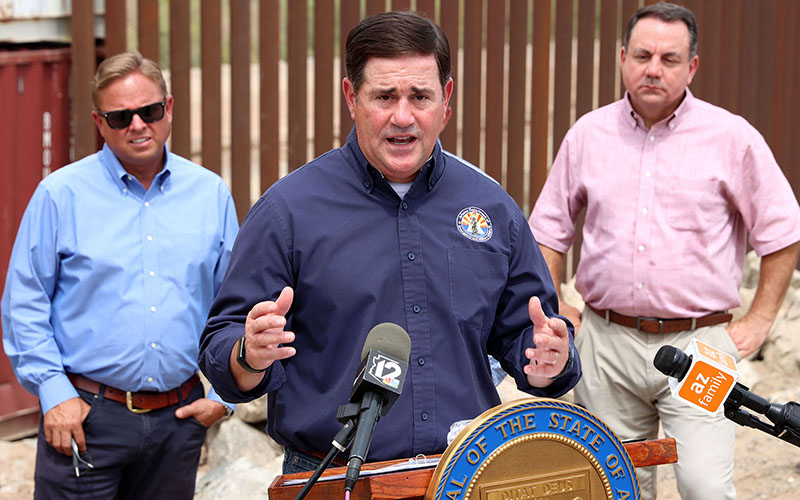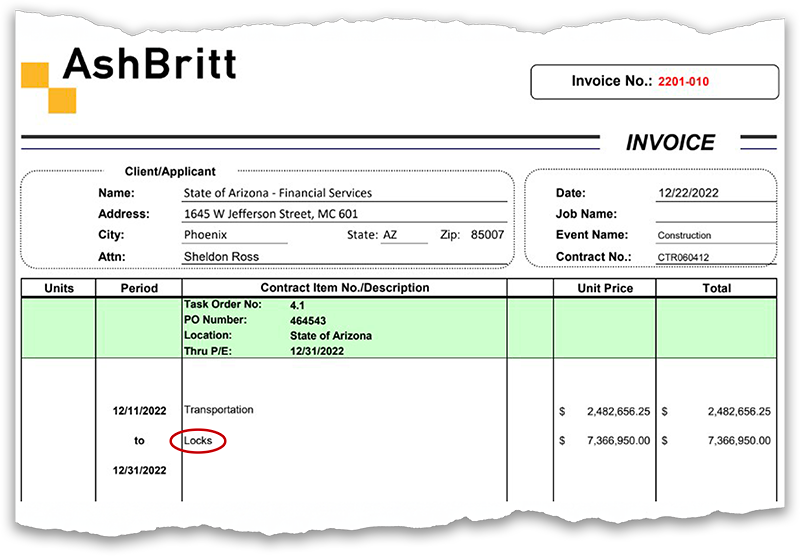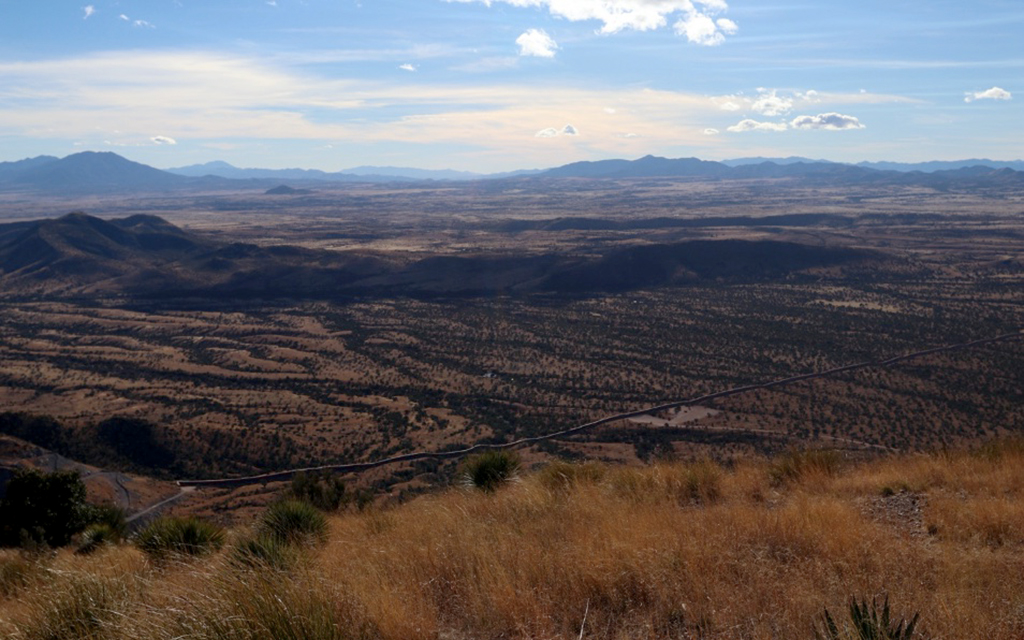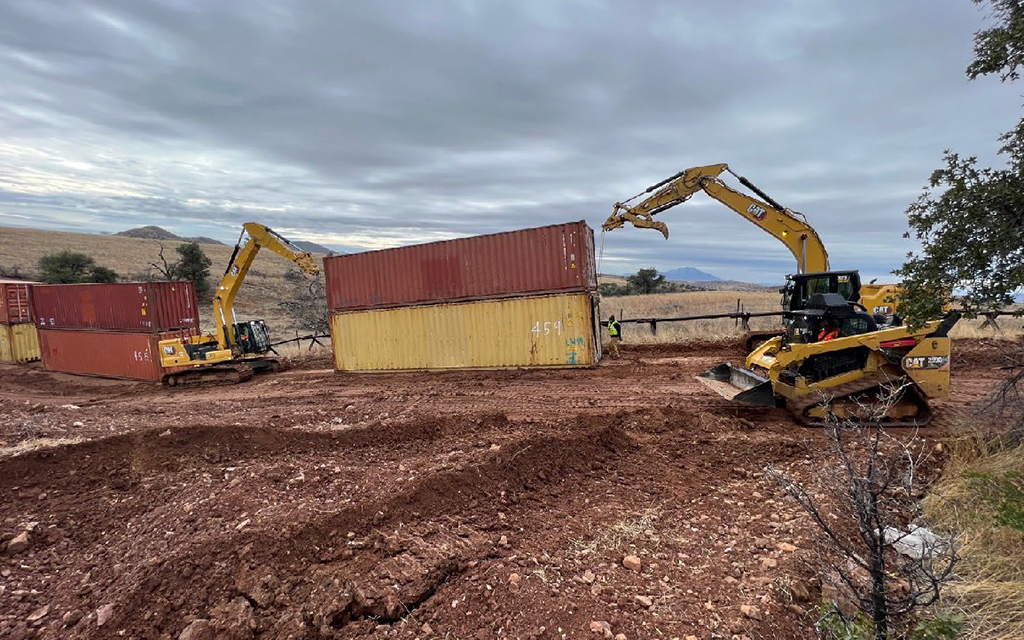‘A very expensive advertisement’
AshBritt continued to buy shipping containers and bill the state for the labor to put them up while the Ducey administration’s lawsuit against the Biden administration was pending.
On Dec. 14, the Biden administration filed suit to have the containers taken down, alleging Arizona was trespassing on federal land.
The two sides reached an agreement on Dec. 21. Two days later, the state signed contract amendments with AshBritt to take down the walls in Yuma and Cochise counties and to transport the containers to state-owned prison complexes less than 50 miles from the border.
Taxpayers paid AshBritt $64.3 million for the deconstruction work and to transport containers not yet used for the wall to the prisons, according to invoices.
The transportation costs associated with removing the containers from the border were more than twice what AshBritt charged to transport them in from ports in either California or Texas, according to the invoices.
Kioski, DEMA’s spokesperson, said in an email costs for removing the containers were more expensive because the transportation included “movement from multiple locations; transporting containers to staging areas, placement, removal from staging areas and movement to their current location for disposition with the Arizona Department of Administration.”
In the end, only about four to four and a half miles of wall were built, less than half of what was originally planned, at a cost of roughly $40 to $50 million per mile, including the cost to take the containers away.
The half-mile section in Yuma stood for four months. The 3.7-mile Cochise section stood for less time.
The project was not a total loss. The state now owns about 2,100 shipping containers parked in southern Arizona, according to DEMA. The market value of used containers ranges from $2,000 to $4,000 each depending on condition, according to multiple online retailers.
Gov. Katie Hobbs’ administration has no definitive plans for them but has suggested they might be converted into affordable housing.
On Feb. 7, AshBritt submitted its final invoice and fulfilled a contract stipulation that it credit an unspecified amount back to the state.
The invoice totaled $20.5 million. The credit back to the state was $150,000.
State Rep. Athena Salman D-Tempe, a member of the House Appropriations Committee, told the Howard Center in an interview that the nearly $200 million spent on the wall could have been better spent on other needs such as housing, health care and education.
“Unfortunately, all these crucial areas have just been ignored and neglected,” she said. “Instead we just see money going towards pet projects and publicity stunts, just so that they can prove a political point.”
But Kavanagh blamed the federal government for the money wasted on the project.
“If they hadn’t have objected, we’d have bought a wall, we’d have more border wall that we need than we have today, since it was removed,” the state senator said.
Kavanagh said the wall’s dismantling sent “a message to the entire country that the federal government is not serious about border security.”
Pausing a moment, he added, “A very expensive advertisement.”
This story was produced by the Howard Center for Investigative Journalism at Arizona State University’s Walter Cronkite School of Journalism and Mass Communication, an initiative of the Scripps Howard Foundation in honor of the late news industry executive and pioneer Roy W. Howard. Contact us at [email protected] or on Twitter @HowardCenterASU.
